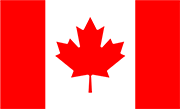Washer Parts
- Search your model number to find:
- Genuine OEM parts guaranteed to fit
- Free manuals and guides
- Repair instructions and videos
Popular Washer Parts
- Drum Not Spinning
- Heat stays on after drum has stopped
- Noisy
- See more...
- Heat stays on after drum has stopped
- Not Heating
- Too hot
- See more...
Not knowing what the problem was I started looking at the coils and could not see any broken parts.
So then checked the thermal fuse for continuity I removed the two wires from it with a small pair of needle nose pliers, it was held in place by two screws, once they were removed the fuse came out easily, I checked continuity with a volt meter placing the meter on X1 Ohms and could not get a reading.
I replaced with a new one and put it all back together the way I took it apart.
Then I plugged it in and it worked first time, I now have warm dry clothes. Read more...
- Drum Not Spinning
- Marks left on clothes
- Noisy
- See more...
- Drum Not Spinning
- Noisy
- Won’t Start
- See more...
Removed the top cover and front assembly w/door and front drum support, right where the unit was located. Had to gain rear access to loosen drum drive belt so undid the dryer vent hose to floor connection through a front acess hole. Moved the unit out to the breakfast nook as well as disconnecting the power cable from the wall socket. Removed the rear access panel covers and unhooked the drive belt. At the front removed the top screws off the lower cross member to allow spreading of the side covers to allow the removal of the drum. Removed drum and found the bearing bushing gone, reduced to powder.
Using the supplied instuction sheet, replaced the rear bearing assembly, replaced the drum after vacumming the whole interior and started the reassembly of the unit using the new belt and moved the unit back into place. Reconnected the power cable and dryer vent then lastly replaced the lint filter and selector knob. Closed the breaker and turned on the machine, no noise!!!
Incidently I am 78 years old. Thanks PartSelect. Read more...
- Marks left on clothes
- Noisy
- See more...
- Marks left on clothes
- Noisy
- See more...
- Does not dispense fabric softener or detergent
- Marks left on clothes
- Not cleaning dishes properly
- See more...
Slip the new cogs into the underside of the cup, and slide the cup back down in the agitator housing using the slots on the side for a guide. (You may want to remove the entire agitator and assemble everything upside down, then flip it all back over to mount, so the cogs don't fall out).
Tighten the bolt, snap the cap back in place on top of the agitator and your'e done. Easy repair. Read more...
The filters are very easy to replace. No tools needed.
Hope this helps. Read more...
- Marks left on clothes
- Noisy
- See more...
2. pop off top of unit
3. remove front of dryer
4. lay unit on its back
5. remove drum and replace pulley assembly,belt,drum rollers of which it has 2 rear and 2 front
6. reverse above and then remove filter-vent housing and scrape off old seal install new seal
7. re-connect power,gas and vent use again
8. only sad part to whole job was seeing how cheaply whirlpool now makes thier products Read more...
Washer Brands
- GE Washer Parts
- Whirlpool Washer Parts
- Maytag Washer Parts
- Kenmore Washer Parts
- Crosley Washer Parts
- Amana Washer Parts
- Inglis Washer Parts
- Roper Washer Parts
- Admiral Washer Parts
- LG Washer Parts
- Hotpoint Washer Parts
- KitchenAid Washer Parts
- Estate Washer Parts
- Magic Chef Washer Parts
- Frigidaire Washer Parts
- Electrolux Washer Parts
- International Washer Parts
- Jenn-Air Washer Parts
- White-Westinghouse Washer Parts
- Gibson Washer Parts
- Hoover Washer Parts
- Norge Washer Parts
- Samsung Washer Parts
- Speed Queen Washer Parts
- Bosch Washer Parts
- Uni Washer Parts
- Tappan Washer Parts
- Kelvinator Washer Parts
- Haier Washer Parts
Related Washer Parts
- Washer Springs and Shock Absorbers
- Washer Agitators
- Washer Hardware
- Washer Transmissions and Clutches
- Washer Insulation
- Washer Pumps
- Washer Latches
- Washer Valves
- Washer Seals and Gaskets
- Washer Motors
- Washer Belts
- Washer Hoses and Tubes
- Washer Switches
- Washer Drums and Tubs
- Washer Wheels and Rollers
- Washer Knobs
- Washer Lights and Bulbs
- Washer Filters
- Washer Bearings
- Washer Drawers and Glides
- Washer Dispensers
- Washer Hinges
- Washer Sensors
- Washer Handles
- Washer Doors
- Washer Pulleys
- Washer Legs and Feet
- Washer Brackets and Flanges
- Washer Caps and Lids
- Washer Circuit Boards and Touch Pads
- Washer Elements and Burners
- Washer Trays and Shelves
- Washer Timers
- Washer Wire Plugs and Connectors
- Washer Trim
- Washer Ducts and Vents
- Washer Panels
- Washer Power Cords
Popular Washer Models
Below are the most popular Washer models we have. Enter your model number in the search box to find your model.
- MAH5500BWW Residential
- MVWX655DW1 WASHER
- WM2016CW Residential WASHER
- WM2016CW WASHER
- WM2016CW WASHER
- WFW9150WW01 Residential, Automatic
- GTWN4250D1WS
- WFW9151YW00 Residential
- WFW9150WW00 Residential, Automatic
- GHW9150PW0 Residential
- MAH2400AWW Residential
- MAH6500AWW Residential
- WFW9050XW00 Residential, Automatic
- GHW9100LW1 Residential, Direct Drive
- FAFW3801LW3
- WM2101HW Residential WASHER
- MAH8700AWW Residential
- WCVH6800J1WW
- GTWN4250D0WS
- PAV2300AWW Residential

































